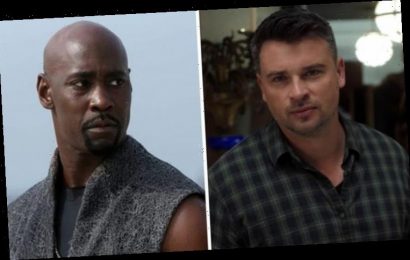Kevin Feige can make anything Marvel-ous.
The Marvel president oversaw the casting of Brett Goldstein as Hercules for the “Thor: Love and Thunder” post-credits scene and surprised showrunners on Disney+ series “Ms. Marvel” with a Brie Larson cameo for the finale. Nia DaCosta, who is helming the “Captain Marvel” sequel (and “Ms. Marvel” tie-in) upcoming film “The Marvels,” directed the post-credits sequence for the show, which series directors Adil El Arbi and Bilall Fallah said they had no idea about. The miniseries ended July 13.
In an interview with Collider, Arbi revealed that he was surprised by Larson’s post-credit scene cameo in the finale alongside Kamala Khan (Iman Vellani).
“We would always ask Kevin, ‘Yo, when’s Captain Marvel going to show up?’ And he would always tell us, ‘Don’t worry about it. You’ll see,’” Arbi said. “Meanwhile, he has said to Nia DaCosta, ‘Just shoot that scene. We need that. And you’ll see.’ All of a sudden, when we were calibrating the final episodes after the credits, we said, ‘Oh. There’s Captain Marvel.’”
He added, “So that was a big surprise for us, as well. But it was pretty cool. It was pretty cool.”
DaCosta was brought on to direct “The Marvels” after Anne Boden and Ryan Fleck shared co-directing duties for 2019’s “Captain Marvel.”
“Ms. Marvel” showrunner Bisha K. Ali told IndieWire that the goal of the Disney+ series was to set the stage for “The Marvels” in 2023 with Kamala joining forces with Carol Danvers aka Captain Marvel.
“It was really about the character journey that we wanted her to go on in the MCU,” Ali told IndieWire. “I knew that she was going to end up in ‘The Marvels’ next year. I didn’t necessarily [know] what that was going to be, but I knew she was going to be alongside Captain Marvel, so she had to be ready for that.”
She continued, “I knew where we’re starting in treating this character as a teenage girl without powers. That journey had to be serviced in a real way in six episodes. To do that, you have to break a different arc. Television is a different medium; adaptation is adaptation for a reason. The core of looking at what should we keep from the comics, what feels essential, was the character work: Who Kamala is and how she approaches the world and how she approaches difficult situations, how she approaches her family and how she approaches her friendships was all really integral in comics and we wanted to bring that to life.”
Source: Read Full Article







